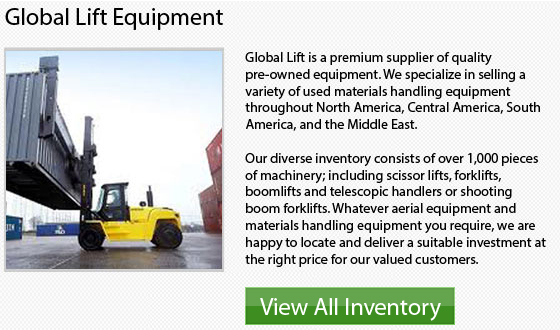
Gradall Telehandlers Fort Worth
Gradall started producing its famous excavator in the 1940's, during a time in which WWII had created a shortage of laborers. This decrease in the work force brought a huge need for the delicate work of finishing and grading highway projects.
A Cleveland, Ohio construction business referred to as Ferwerda-Werba-Ferwerda faced this particular dilemma first hand. Two brothers, Ray and Koop Ferwerda had moved to the United States from the Netherlands. They were partners in the company which had become one of the major highway contractors in the state of Ohio. The Ferwerdas' started to make an equipment that would save both their business and their livelihoods by inventing a unit which will perform what had previously been manual slope work. This invention was to offset the gap left in the worksite when so many men had joined the army.
The brothers initially created an apparatus that had 2 beams set on a rotating platform, that was fixed on top of a used truck. They utilized a telescopic cylinder to move the beams in and out. This enabled the fixed blade at the end of the beams to pull or push dirt.
After a short time, the Ferwerda brothers improved on their first design. They made a triangular boom to produce more power. After that, they added a tilt cylinder that enabled the boom to turn 45 degrees in either direction. This new unit could be equipped with either a blade or a bucket and the attachment movement was made possible by placing a cylinder at the rear of the boom. This design powered a long push rod and allowed much work to be completed.
Numerous digging buckets became available on the market not long later. These buckets in sizes ranging from 15 inch, 24 inch, 36 inch and 60 inch buckets. There was also a 47 inch heavy-duty pavement removal bucket that was available too.
- Fantuzzi Container Forklift Fort Worth
Rail / Intermodal Reach Stacker Rail or Intermodal Reach Stackers manufactured by Fantuzzi would make fast work of difficult applications. The distances between the first and second rail will drastically vary depending on the task.... More - Taylor Rough Terrain Forklift Fort Worth
Rough Terrain Lift Truck Training Class VII or rough terrain forklifts are often used in logging and forestry projects and are common on construction sites. They are the popular option for outdoor settings which depend... More - JCB Zoom Boom Fort Worth
Raw Materials The cab, body, boom and frame of a telescoping boom rough terrain forklift are generally manufactured by a lift truck manufacturer. The most common material used for these subassemblies is steel, because of... More - Potain Self Erect Cranes Fort Worth
Tower cranes are being utilized often for big building construction projects. They are necessary for the heavy lifting and positioning of materials and machinery. Tower cranes provide a different design that offers a lot of... More - Yale LP Forklifts Fort Worth
You'll notice specific types and classes of forklifts available on the market. Once you have become familiar with the numerous models, it is easier to understand you lift truck application needs prior to choosing one.... More








